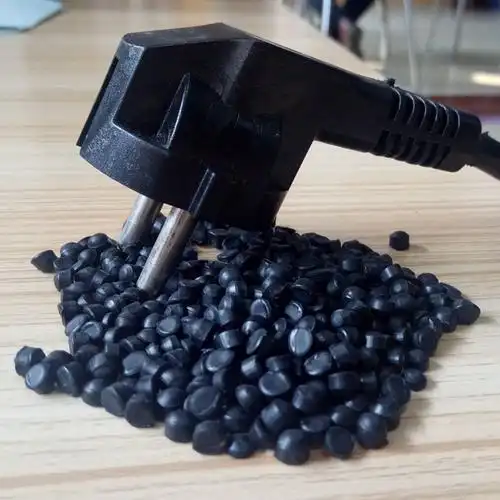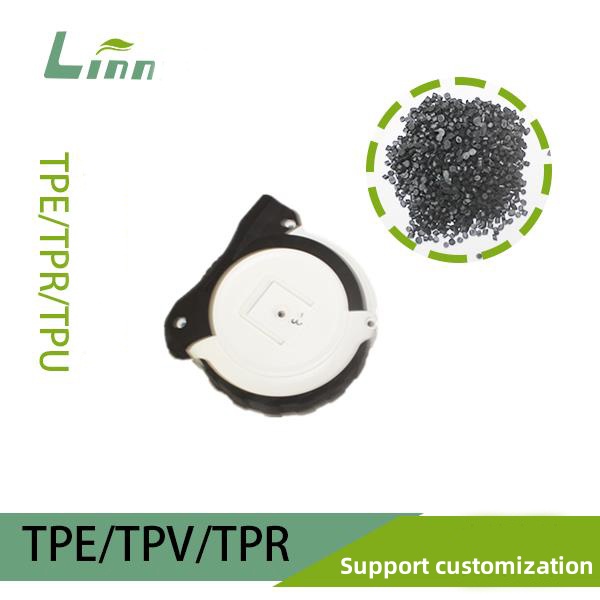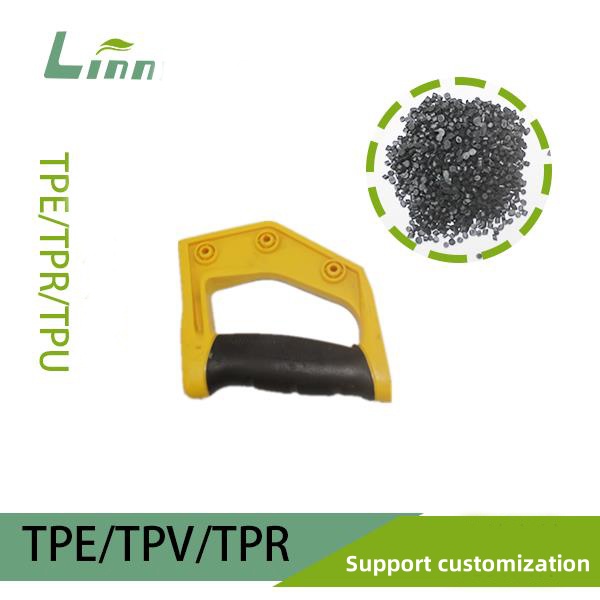In the world of plastic injection molding, TPR (thermoplastic rubber) is popular for its unique combination of properties, such as flexibility, good elasticity, and easy processing. However, a common problem many manufacturers encounter is that TPR injection molded products may deform the day after production. As someone who has been deeply involved in the plastic injection molding industry for many years, I have seen countless cases of such problems and accumulated valuable insights into their causes and solutions. In this article, I will share my experience and knowledge to help you understand why TPR injection molded products deform the next day and how to prevent them.
1. Understanding TPR Material Properties
Composition and Structure of TPR
TPR is a blend of thermoplastic polymers and rubber components. The thermoplastic part provides the material with processability, allowing it to be melted and molded repeatedly. The rubber component gives TPR its elasticity and flexibility. The exact composition of TPR can vary depending on the manufacturer and the intended application. Some TPR materials may have a higher proportion of rubber for better elasticity, while others may have more thermoplastic polymers for improved strength.
Thermal and Mechanical Properties
TPR has specific thermal and mechanical properties that are crucial for injection molding. It has a relatively low melting point compared to some other plastics, which makes it easy to process but also means it is more sensitive to temperature changes. In terms of mechanical properties, TPR has good elongation at break and tensile strength, but it can also be prone to deformation under certain conditions.

2. Factors Leading to Deformation the Next Day
Inadequate Cooling During Injection Molding
Uneven Cooling
One of the most common reasons for TPR injection – molded products to deform the next day is uneven cooling during the injection molding process. When the TPR material is injected into the mold, it needs to cool evenly to solidify properly. If there are areas in the mold that cool faster than others, it can create internal stresses within the product. These internal stresses may not be immediately apparent, but over time, as the product is exposed to room temperature or other environmental conditions, they can cause the product to deform.
For example, if the mold has a complex shape with thick and thin sections, the thin sections may cool more quickly than the thick ones. This can lead to differential shrinkage, where the thick sections shrink more than the thin sections after ejection from the mold, causing the product to warp.
Insufficient Cooling Time
Another cooling – related issue is insufficient cooling time. If the product is ejected from the mold before it has fully cooled and solidified, it will continue to shrink and deform as it cools further at room temperature. This is especially true for large or thick – walled TPR products.
Improper Mold Design
Poor Gate Design
The gate is the opening through which the TPR material is injected into the mold. A poorly designed gate can lead to uneven flow of the material within the mold, resulting in non – uniform density and internal stresses. For instance, if the gate is too small, it can cause high shear forces during injection, which can generate heat and affect the material’s properties. On the other hand, if the gate is too large, it may lead to excessive material flow and uneven filling of the mold.
Lack of Venting
Venting is essential in injection molding to allow air and gases to escape from the mold cavity as the TPR material is injected. If there is inadequate venting, the trapped air and gases can create voids or bubbles within the product, which can weaken its structure and lead to deformation. Additionally, the pressure from the trapped gases can cause the product to bulge or warp.

Material – Related Issues
Inconsistent Material Quality
The quality of the TPR material can have a significant impact on the final product’s dimensional stability. If the material has inconsistent properties, such as varying molecular weight distribution or additives, it can lead to uneven shrinkage during cooling. For example, if a batch of TPR material has a higher proportion of low – molecular – weight components, it may shrink more than a batch with a more uniform molecular weight distribution.
Moisture Absorption
TPR materials can absorb moisture from the environment. If the material is not properly dried before injection molding, the moisture can turn into steam during the heating process, causing internal voids and blisters. These defects can weaken the product and make it more susceptible to deformation.
Post – Molding Handling and Storage
Improper Ejection
The way the product is ejected from the mold can also affect its dimensional stability. If excessive force is used during ejection, it can cause the product to bend or deform. Additionally, if the product is not handled gently after ejection, it may be subjected to mechanical stresses that can lead to deformation.
Incorrect Storage Conditions
After injection molding, the TPR products need to be stored in appropriate conditions. If they are stored in an area with high temperature or humidity, it can cause the material to soften or absorb more moisture, leading to deformation. For example, storing the products in direct sunlight or near a heat source can cause them to warp.

3. Deformation – Causing Factors Summary Table
| Factor | Description | Impact on Deformation |
|---|---|---|
| Inadequate Cooling | Uneven cooling or insufficient cooling time | Creates internal stresses, leading to warping |
| Improper Mold Design | Poor gate design or lack of venting | Causes uneven material flow, voids, and bulging |
| Material – Related Issues | Inconsistent material quality or moisture absorption | Results in uneven shrinkage and weakened structure |
| Post – Molding Handling and Storage | Improper ejection or incorrect storage conditions | Subjects the product to mechanical stresses and environmental effects, causing deformation |
4. Diagnosing Deformation Problems
Visual Inspection
The first step in diagnosing deformation problems is a visual inspection of the products. Look for signs of warping, twisting, or bulging. Check if the deformation is uniform across all products or if it is more pronounced in certain areas. This can give you an initial indication of the possible causes.
Dimensional Measurements
Use precision measuring tools, such as calipers or micrometers, to measure the dimensions of the products. Compare the measured dimensions with the design specifications to determine the extent of the deformation. This can help you identify if the deformation is within acceptable tolerances or if it requires corrective action.
Material Analysis
If you suspect that the material quality is the cause of the deformation, you can conduct material analysis. This may include testing the molecular weight distribution, moisture content, and other properties of the TPR material. By comparing the results with the material specifications, you can determine if the material is within the acceptable range.
Mold Flow Analysis
Mold flow analysis is a computer – based simulation technique that can help you understand how the TPR material flows within the mold during injection molding. By simulating the injection process, you can identify areas of uneven flow, high shear forces, and potential air traps. This information can be used to optimize the mold design and injection molding parameters to prevent deformation.

5. Solutions to Prevent Deformation
Optimizing Cooling
Even Cooling Channels
Design the mold with evenly distributed cooling channels to ensure that the TPR material cools uniformly. You can use advanced cooling technologies, such as conformal cooling, which follows the shape of the mold cavity to provide more efficient cooling.
Proper Cooling Time
Determine the appropriate cooling time based on the product’s size, wall thickness, and material properties. You can use empirical data or mold flow analysis to estimate the cooling time required for the product to reach a stable state.
Improving Mold Design
Optimal Gate Design
Design the gate to provide a smooth and even flow of the TPR material into the mold. Consider factors such as gate size, shape, and location to minimize shear forces and ensure uniform filling of the mold cavity.
Adequate Venting
Add sufficient venting to the mold to allow air and gases to escape during injection molding. The venting should be placed in areas where air is likely to be trapped, such as near the end of the mold cavity or in areas with complex shapes.
Material Quality Control
Supplier Selection
Choose a reputable supplier of TPR material that can provide consistent quality. Request material certificates and test reports to ensure that the material meets your specifications.
Pre – Drying
Dry the TPR material before injection molding according to the manufacturer’s recommendations. Use a dehumidifying dryer to remove moisture from the material and prevent internal voids and blisters.
Proper Post – Molding Handling and Storage
Gentle Ejection
Use appropriate ejection mechanisms and ensure that the ejection force is not excessive. You can also use ejection pins or sleeves with a smooth surface to minimize the risk of damaging the product during ejection.
Controlled Storage Conditions
Store the TPR products in a cool, dry, and well – ventilated area. Avoid exposing them to direct sunlight, heat sources, or high humidity. You can also use packaging materials that provide protection against physical damage and environmental effects.

6. Case Studies
Case Study 1: Deformation Due to Uneven Cooling
A manufacturer of TPR phone cases was experiencing deformation problems with their products. The cases were warping and twisting the next day after production. After a thorough investigation, it was found that the cooling channels in the mold were not evenly distributed, causing some areas of the cases to cool faster than others.
Solution: The manufacturer redesigned the mold with evenly distributed cooling channels. They also adjusted the cooling time based on the new mold design. As a result, the deformation problems were significantly reduced, and the dimensional stability of the phone cases improved.
Case Study 2: Deformation Due to Poor Gate Design
A company producing TPR toy parts was facing issues with the products bulging in certain areas. Upon further analysis, it was discovered that the gate design was causing high shear forces during injection, leading to internal stresses and deformation.
Solution: The company modified the gate design to reduce the shear forces. They increased the gate size and changed its shape to provide a more gradual flow of the TPR material. After implementing these changes, the bulging problems were eliminated, and the quality of the toy parts improved.

Related Questions and Answers
Q1: Can the injection molding machine settings affect TPR product deformation?
A: Yes, the injection molding machine settings can have a significant impact on TPR product deformation. Parameters such as injection pressure, injection speed, and holding pressure can affect the material flow and internal stresses within the product. For example, high injection pressure can cause excessive shear forces and lead to deformation. It’s important to optimize these settings based on the product’s design, material properties, and mold characteristics to minimize deformation.
Q2: How can I determine the optimal cooling time for TPR injection – molded products?
A: Determining the optimal cooling time for TPR injection – molded products can be a bit of a trial – and – error process, but there are some guidelines you can follow. You can start by referring to the material supplier’s recommendations for cooling time based on the material’s properties and the product’s wall thickness. You can also use empirical data from previous production runs or conduct small – scale tests. Additionally, mold flow analysis can provide valuable insights into the cooling process and help you estimate the required cooling time.
Q3: What are some common signs of moisture absorption in TPR material?
A: Common signs of moisture absorption in TPR material include the formation of blisters or voids on the surface of the injection – molded products, a decrease in the material’s strength and elasticity, and an increase in the product’s shrinkage. If you notice any of these signs, it’s likely that the TPR material has absorbed moisture and needs to be dried before further processing.
Q4: How does the ambient temperature and humidity affect TPR product deformation after molding?
A: Ambient temperature and humidity can have a significant impact on TPR product deformation after molding. High temperatures can cause the TPR material to soften, leading to warping or sagging. High humidity can cause the material to absorb moisture, which can also affect its dimensional stability. It’s important to store and handle the TPR products in a controlled environment with appropriate temperature and humidity levels to prevent deformation.
Q5: Can I use post – molding treatments to correct deformation in TPR products?
A: In some cases, post – molding treatments can be used to correct minor deformation in TPR products. For example, heat treatment can be used to relax the internal stresses and allow the product to return to its original shape. However, post – molding treatments may not be effective for severe deformation or for products with complex shapes. It’s always better to prevent deformation through proper mold design, material selection, and injection molding process control rather than relying on post – molding corrections.
In conclusion, TPR injection – molded products can deform the next day due to a variety of factors, including inadequate cooling, improper mold design, material – related issues, and post – molding handling and storage. By understanding these causes and implementing the appropriate solutions, such as optimizing cooling, improving mold design, controlling material quality, and adopting proper post – molding practices, you can prevent deformation and ensure the dimensional stability of your TPR injection – molded products. Remember, each product and mold is unique, so it may require some trial and error to find the best solutions for your specific situation.





